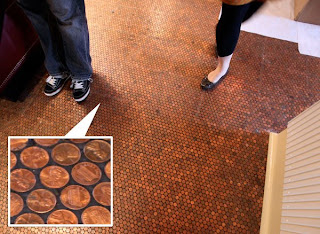 ~ Expert Debunks Myths About Accessible Travel
~ Expert Debunks Myths About Accessible TravelBy Candy Harrington
With the evolution of the internet, information is just a few mouse clicks away. That includes information about accessible travel. An although the internet is a great tool for disabled travellers, there’s also a lot of misinformation circulating on-line. And that can be a very dangerous thing.
Says Candy Harrington, author of Barrier-Free Travel; A Nuts and Bolts Guide for Wheelers and Slow Walkers, “I get a lot of mail from readers who have relied on misinformation they found on-line. When all was said and done, they later discovered it was just someone’s incorrect interpretation of the law. For example, wheelchair-users don’t get automatic upgrades to first-class, nor are they always entitled to bulkhead seating on airplanes.”
In the end, just because someone types it, doesn’t mean it’s true. With that in mind, here are some examples of accessible travel misinformation that Candy recently spotted on-line.
Myth: The Americans with Disabilities Act (ADA) is the law that covers air travel for disabled passengers.
Fact: The Air Carrier Access Act (ACAA), which actually predates the ADA, covers airline and aircraft accessibility. The ADA does not.
Myth: Companions of disabled passengers are entitled to free flights under the ACAA.
Fact: Airline personnel can require a passenger to travel with a “safety assistant” if they feel the passenger cannot adequately assist with his or her own emergency evacuation. The cabin crew however, usually designates another paying passenger or an off-duty crew member to act in this capacity.
Myth: Wheelchair-users are guaranteed bulkhead seating on airplanes.
Fact: Under the ACAA, people with a fused leg and those who travel with a service animal are the only passengers guaranteed bulkhead seating.
Myth: You don’t need to make advance arrangements for accessible rooms.
Fact: Truthfully you don’t need to make reservations for any hotel room; however that doesn’t mean you will have a room when you arrive. The same goes for accessible rooms. The only way to ensure your room will have the access features you need, is to make an advance reservation. In practice, only a small portion of hotel rooms have access features.
Myth: Making a reservation at a property assures you that the accessible room will be there when you arrive, because you have guaranteed it with your credit card.
Fact: Guaranteeing a room with your credit card only locks you in on a specific rate. Blocking a room sets aside a specific room for a specific guest on a specific date. All accessible rooms need to be blocked.
Myth: All accessible guest rooms have roll-in showers.
Fact: In the US, only hotels with over 50 rooms are required to have accessible guest rooms with roll-in showers. Those with under 50 rooms are merely required to have tub/shower combinations with grab bars.
Myth: All hotels have to have shuttles that are wheelchair-accessible.
Fact: If a hotel provides free airport transfers, they must also provide accessible transfers at no charge. They don’t have to own their own accessible vehicle though. They can contract out the service, but they cannot charge extra for it.
Myth: Cruise ships have to be accessible under the ADA.
Fact: Even though the Supreme Court ruled that the ADA applies to foreign-flagged cruise ships that call on US ports, we still don’t have any specific access guidelines for them. Those are being sorted out by the US Access Board and the Department of Transportation (DOT). For now, all the access modifications the cruise lines have made, have been completely voluntary.
Myth: The ship-sponsored shore excursions on most cruises are usually accessible.
Fact: In order to take most ship-sponsored shore excursions you have to be able to walk a few steps and climb up into a bus. Most of the ship-sponsored tours do not include accessible transportation. The exception is in Alaska, but you have to specifically request an adapted vehicle there, even on tours that are designated as “accessible”.
Myth: Theme parks let wheelchair-users go to the front of the line so they don’t have to wait.
Fact: In some cases, disabled guests are allowed to access certain attractions through the exit, because it’s more accessible. The newer rides and attractions are being built with accessible entrances, so this alternative access is no longer required. This accommodation was never meant as a line-cutting privilege, as everyone has to wait at theme parks. The goal is to have all guests access the attractions through one integrated (and accessible) entrance.
Barrier-Free Travel; A Nuts and Bolts Guide for Wheelers and Slow Walkers, is available from your favourite bookstore or at www.BarrierFreeTravel.net. Candy Harrington also blogs regularly about accessible travel issues at www.BarrierFreeTravels.com.
Image courtesy of Global Access News…












